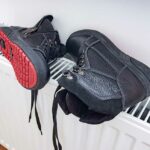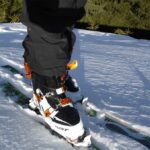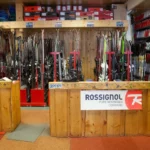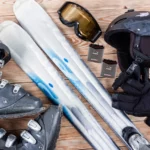Getting cold feet will put a fast end to your skiing trip. We’re not talking figuratively; frozen toes are a real problem for skiers all over the world.
Not only is it uncomfortable, it can become a medical issue that also affects your skiing performance. You can’t move properly if you can’t feel your own feet, so you’ll get clumsy and end up falling over.
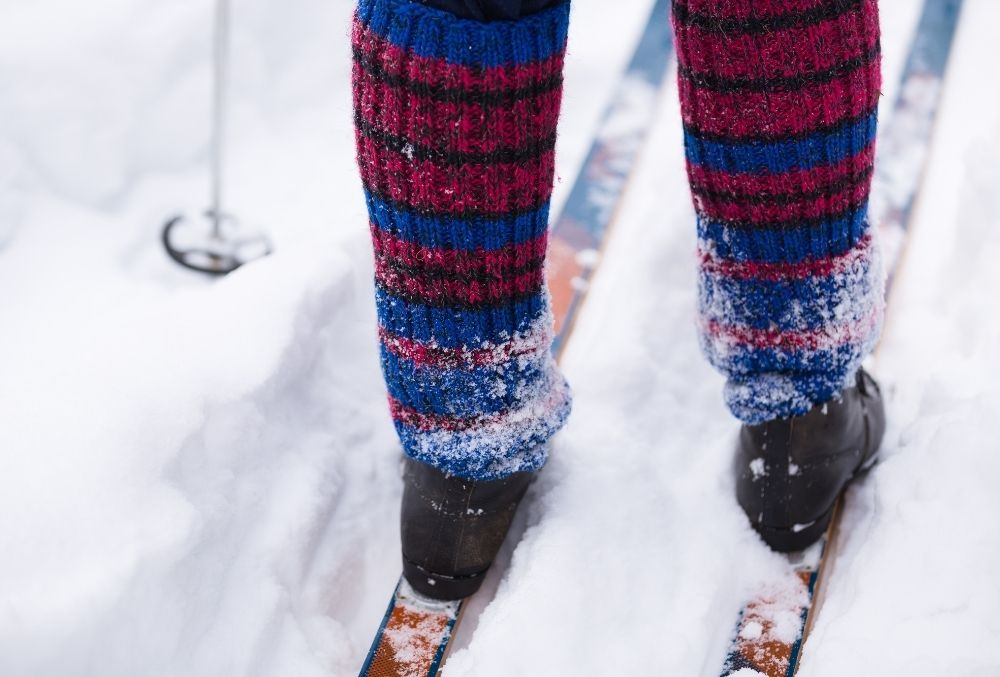
Assuming you have found ways to keep the rest of your body warm, here we have the best methods you can use to keep your feet warm while skiing.
Your extremities, at your hands and your feet, are the most vulnerable to becoming cold. That’s why it’s so important to keep them safe, so you can stay healthy and keep up a top-notch skiing performance.
Get Ski Socks
Naturally, we’re covering a lot of different footwear today. No matter what boots you’re wearing, you should also have ski socks underneath them.
When it comes to ski socks, you’re typically better off grabbing thinner ones that are made for skiing. It may be tempting to get thicker socks but that puts more material between you and the ground, which may affect your accuracy when maneuvering.
Ski socks are made in such a way that you don’t lose anything from the thinner materials. While it was common to opt for thicker materials in the past, modern ski socks are made from nylon, wool, and elastic blends that are great at wicking moisture while acting as a second skin.
It’s best if they sit just above your calf, so you don’t need to worry about them falling when you’re halfway down a slope.
We recommend thinner socks because they let your feet breathe. This is an often-overlooked thing in skiing socks but remember, skiing is physically intensive, and so moisture will build up around your feet.
With a pair of standard cotton socks, that moisture will get trapped and become unpleasant. Not only that, but the moisture also then makes it easier for your feet to become even colder than they typically would. Remember that dryness is important when trying to stay warm.
With thinner socks also comes freedom of movement, so you can move your feet and help them stay warmer.
It can also help create an environment within the boots, so a thin layer of warm air stops the cold from penetrating your socks and making your feet cold. Also, if your foot is crammed into a boot and there are circulation issues, your feet will get cold even faster.
Maybe you’re used to wearing thicker socks or you just like the extra layering, in which case you’re better off wearing two pairs of thin socks on top of each other. That’s better than one pair of thick socks, in our opinion.
Choose The Right Ski Boots
Just like with any sport or physical activity, your choice of footwear is paramount. First, they should be the right size.
Along with the size, you should also make sure that your heels aren’t lifting when you ski. You can solve this by tightening your boots, sometimes, and that will stop your lifted heels from interfering with air circulation. It also awkwardly arcs your foot, which can lead to aches and pains further into your trip.
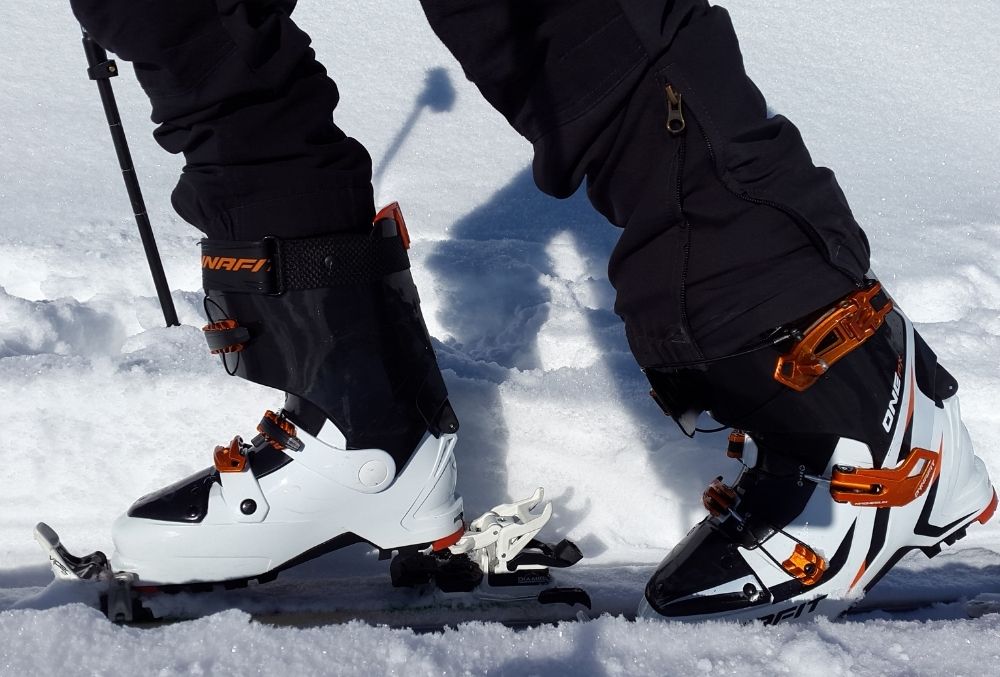
Try to avoid ski boots that are made for racing, too. These are intended for competitive skiing where you race for a short period and then rest, not for a day out at the slopes. Instead, get all-mountain boots.
If you are renting, don’t second guess the size. Instead, use a measuring tool or just make sure that the boots you get are the right size and fit perfectly, during normal movement and when skiing.
Open Your Ski Boots
When you’re not out on the slopes, you should open the buckles on your ski boots. Remember what we said about circulation above. By opening up your ski boots, you let warm air reach your feet and the in-shoe environment.
In areas at room temperature, like a restroom or the nearest coffee stop, this will help a lot and warm your feet.
Just ten minutes of this should be enough to make a difference. It’ll take longer for your feet to get cold when you take to the slopes again if they get cold at all.
With that in mind, it’s even better if you can take them off for a few minutes too.
If you do this, however, you should be careful where you’re stepping. If you’re walking on a cold surface or you step in a liquid that makes your socks cold, you’ll have made the situation even worse when you slip the skiing boots on.
Use Disposable Boot Warmers
Since keeping feet cool is such a problem for many skiers, you can get boot warmers that are inexpensive and can give you momentary relief from low temperatures. They’re essentially hand warmers but, well, for your feet.
They are insoles that go underneath your feet, between the socks and the boot’s insoles, and will help keep your feet warm when you’re out at the slopes. You should be able to find them at on-site ski shops if you can’t bring any beforehand.
Use Boot Heaters
Ski boot heaters take disposable boot warmers to the next level. They take more effort to set up and they’re going to be more expensive, but they may be able to help if you haven’t seen any results with the other options on this page.
Like disposable boot warmers, they are special insoles that slot into your ski boots and lie underneath your feet when you’re skiing. You’ll typically need to own your ski boots since you’re modifying them with these small, electrified heaters.
They work by connecting a cord from these heated insoles into a small battery to power them. The battery is typically rigged to the back of the ski boots.
They’re great for very cold conditions but they’re not for everybody. In fact, some may find them to be a little too warm if the slopes you’re skiing aren’t cold enough.
As we said, they can get pretty expensive too, but they may be worth the investment if you’re a skier who prefers to source their own gear and plans on riding the coldest slopes.
Along with heaters, you can also get dedicated ski boot dryers that are intended to remove moisture from your boots. They’re great for those who sweat a lot. Remember that the cold will latch onto any moisture in the materials that you’re wearing, so removing excess moisture when the boots aren’t being used is important.
Try BootGloves
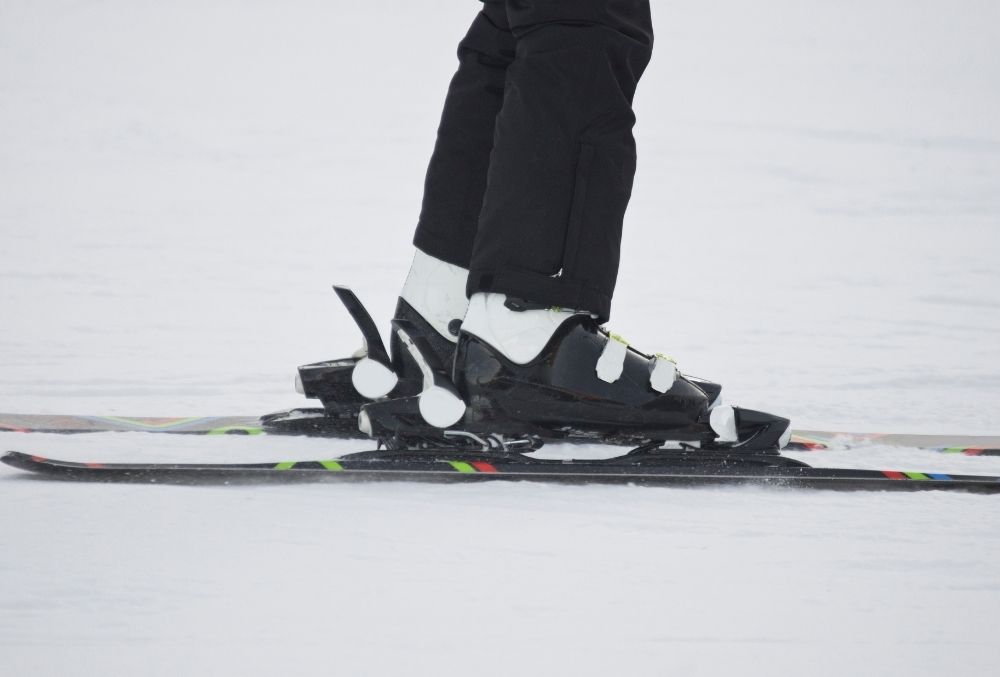
Most of them have Velcro fasteners that make sure the covers don’t fly away mid-slope. When they’re working properly, they can add 50 degrees of warmth.
As for other inexpensive ways of keeping your ski boots warm, you should always keep them inside and store them next to sources of heat so they acquire extra warmth for your next use. Make sure the liners of your boots are warm before hitting the slopes, too.
Storing your boots in the trunk of your car isn’t an option. There, they will become cold and any moisture inside of them will linger. Then, when you’re wearing them on the slopes, that moisture will make your feet even colder than they would be with dry boots.
Try Thermostats
Another great and cost-effective way to keep your feet warm while skiing is thermostats. In a skiing context, thermostats are heat reflectors.
When placed inside ski boots, they’ll take the heat from your feet and then redirect it upwards. This cycles warmth around your feet for longer, instead of being absorbed into the rest of the boot where that heat energy is lost.
This can make your feet up to 20 degrees warmer since less heat is lost. The best reflectors are also very thin, so you can barely feel them and they should fit in every ski boot.
Assuming the boot is correctly sized, you can also throw them into rented boots since they’re versatile, inconspicuous, and removable.
Keep Your Body Warm
Last but not least, you should try to keep your entire body as warm as possible. The more heat that is available in your body, the more that can be transported to your extremities.
This means your feet and toes, and your hands and fingers will be better off at fighting cold and staying comfortable in wintry conditions. Assess your ski destination by looking at the temperature and the humidity for when you’ll be there.
Remember that your head is one of the most important parts of your body when it comes to heating. Make sure you’re wearing headgear that will keep your head from getting too cold. From there, you should also focus on heating your core as much as possible.
First, you need to have a base layer that won’t gather moisture, so that it stays dry under the rest of your gear. This is very important if you tend to sweat a lot during ski trips, too.
From there, you should make sure you have comfortable gloves that are perfect for the climate you’re skiing in. Your hands are closer to your core than your feet, so keeping the hands warm stops heat from being prioritized to the hands in cold conditions.
If your legs get cold due to inadequate heat protection, the cold will travel down to your feet too. You should wear pants that fit well and are intended for skiing, being made of a waterproof material that won’t harbor any moisture after coming into contact with the snow.
Fortunately, there should be many accessories available at the stores of dedicated ski destinations, like resorts. In those shops, you should be able to find things that will keep your feet, and your body at large, warmer.
- How to Train in the Summer for Cross-Country Skiing: Off-Season Strategies for Peak Performance - April 19, 2024
- Ski Lift Ticket Prices in Colorado [For 2024 Season] - January 26, 2024
- How to Choose Classic Cross-Country Skis: A Guide for Beginners - November 10, 2023


